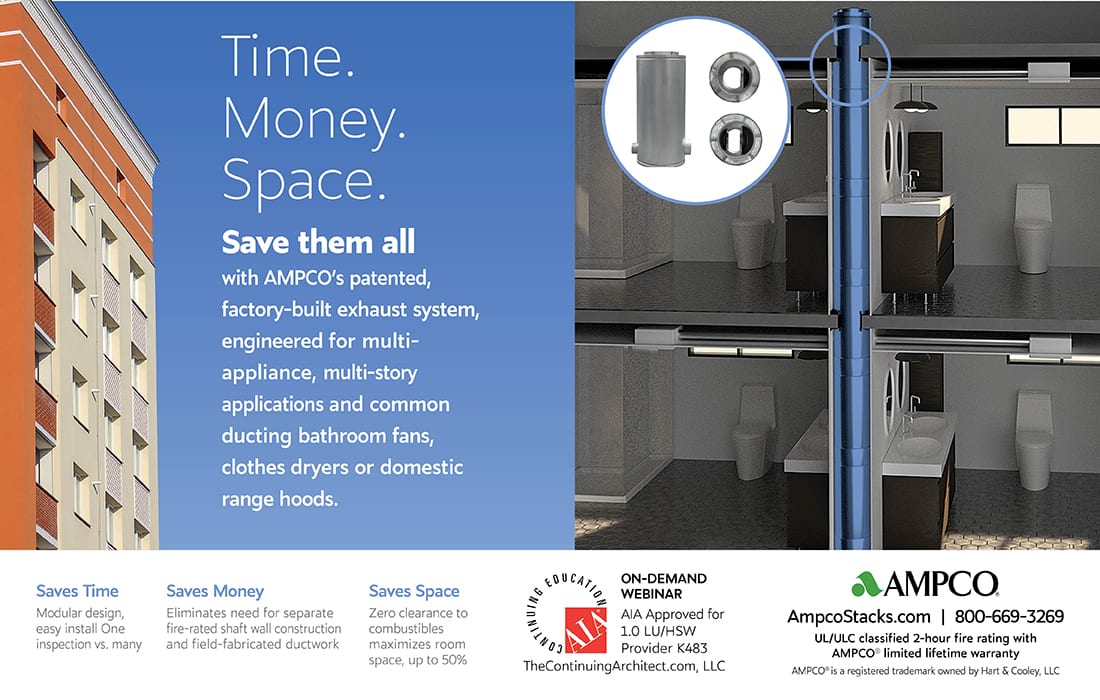
Building Health: A Physician’s View
Optimizing the Indoor Environments of Nursing Homes
Increased acute and chronic inflammation, oxidative stress on target organs, and worsening of underlying pulmonary and cardiovascular disease are some of the verified risks of suboptimal IAQ.
SCROLL
Nursing home residents and their families have endured tragic losses from the COVID-19 pandemic. Sadly, this vulnerable population may once again be disproportionately affected by illness from new SARS-CoV-2 variants.
Because of the pandemic, the financial burdens on nursing home facilities are staggering. More than half of nursing homes recently surveyed reported they are operating at a loss, and 72% said they will not be able to sustain operations for another year at the current pace.1 Much of this financial strain has been driven by an increase in unavoidable expenses from purchasing personal protective equipment (PPE) and paying for additional staffing. Compounding the budget strain from increased spending are decreased profits. Higher mortality rates along with transference of residents to hospitals for additional care have resulted in more unoccupied beds in many nursing homes.
What else can we do to improve this situation?
Nursing home residents, most of whom are 65 or older, often have underlying chronic medical conditions and reduced immune defenses. Furthermore, they spend most of their time indoors, where concentrations of contaminants are often higher than they are outdoors. Indoor exposures are usually undocumented because they have not historically been monitored or regulated, yet they can play a significant role in the morbidity and mortality of residents.2
In the past several years, medical studies have begun to reveal the significance of indoor air pollutants on the respiratory health of elderly nursing home residents. Increased acute and chronic inflammation, oxidative stress on target organs, and worsening of underlying pulmonary and cardiovascular disease are some of the verified risks of suboptimal IAQ.3
The rapid spread of COVID-19 in nursing homes has underscored the need to understand the contribution of indoor environments to the airborne transmission of infectious diseases. While COVID-19 highlighted the need to make the relationship between building occupant health and the indoor environment visible, this clarity will benefit all humans who use buildings for work or shelter.
The Relationship Between IAQ and Specific Medical Conditions
Large studies of U.S. and European nursing homes have found that exposure to elevated concentrations of indoor particulate matter and nitrogen dioxide (NO2) are associated with shortness of breath, coughing, and wheezing. Elevated indoor NO2, formaldehyde, and PM0.1 concentrations are associated with decreased lung function and chronic obstructive pulmonary disease (COPD); allergic rhinitis is associated with high indoor concentrations of PM10; volatile organic compounds (VOC) and PM2.5 increase pulmonary infections and inflammation; and high PM2.5 concentrations are associated with increased blood pressure.
Surprisingly, and very concerning, are that these IAQ and health associations were found in nursing homes, where building management complied with national guidelines. One study revealed that only 19% of nursing homes had adequate ventilation as determined by indoor carbon dioxide (CO2) concentrations.4
Nursing Home Lost Revenue
A less visible consequence of exposure to indoor air pollutants, even at low concentrations, is their role in catalyzing resident transfers to emergency departments to treat sudden deteriorations in health.5 Transfers for acute care is costly and frightening for both patients and family members. Furthermore, if residents are admitted to the hospital for longer care, they risk harm from adverse events, such as health care-associated infections (HAIs) from drug-resistant infections.
When residents are hospitalized, Medicare, Medicaid, and private insurers withhold or reduce payment to nursing homes for “empty bed days.” The reimbursement rates for “bed hold” days vary by state from no reimbursement at all to partial reimbursement. Almost all states limit the number of days covered and reduce the payment amounts to 30% to 75% of their Medicaid per diem rate. Clearly, empty bed days due to hospitalization of residents creates financial hardships on nursing homes across the U.S.
Optimizing nursing home indoor environmental factors, including indoor air pollution, can both improve the health of residents and create greater profitability for the facility in the following ways:
- Decrease transfers to acute care hospitals;
- Reduce patient deaths;
- Avoid room rearrangements to accommodate patients with infections;
- Avoid empty beds;
- Reduce staff turnover by reducing employee stress from sick and dying residents; and
- Improve market share by demonstrating to families a comprehensive approach to care.
Now is the time to broadly utilize monitoring solutions that identify environmental contaminants that impact occupant health. This visibility creates an avenue for proactive remediation, when needed, thereby safeguarding the health of nursing home residents and mitigating lost revenue from avoidable acute care transfers and hospitalizations.6
Pulling back the curtain to reveal the connection between the indoor environment and human health is undeniably a win-win endeavor.
- Parkinson, M. State of Nursing Home Industry: Facing Financial Crisis and Staffing Challenges. American Health Care Association and National Center for Assisted Living, Dec. 2020.
- Bentayeb, M. Indoor air quality, ventilation and respiratory health in elderly residents living in nursing homes in Europe. Eur Respir J 2015; 45: 1228-1238.
- Ailshire, J. Fine particulate matter air pollution and cognitive function around older US adults. Am J Epidemiol. 2014;180(4):359–366.
- Ibid. Bentayeb 2015
- Reddy,M. Inadequate indoor air quality in nursing homes: An unmet medical need. Sci Total Environ, 2021 April 15; 765:144273
- Vasilevskis, E. Potentially Avoidable Readmissions of Patients Discharged to Post-Acute Care: Perspectives of Hospital and Skilled Nursing Facility Staff. J Am Geriatr Soc. 2017 Feb.; 65(2): 2269-276.


